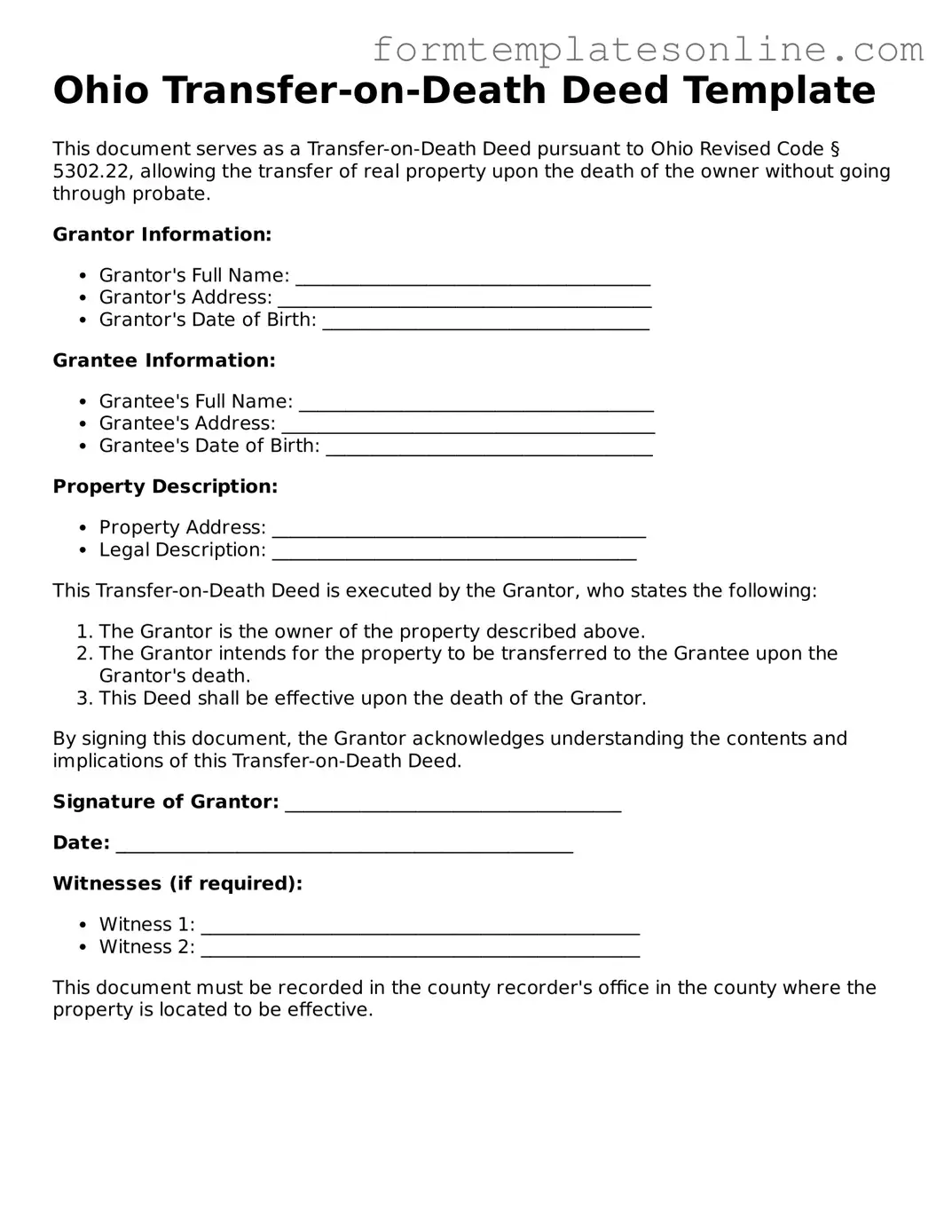What is a Transfer-on-Death Deed in Ohio?
A Transfer-on-Death Deed (TODD) in Ohio is a legal document that allows property owners to transfer their real estate to designated beneficiaries upon their death. This deed enables the property owner to retain full control over the property during their lifetime. It avoids the probate process, making it a straightforward option for transferring property to heirs without the complexities often associated with wills and trusts.
How do I create a Transfer-on-Death Deed?
To create a Transfer-on-Death Deed in Ohio, you must fill out the appropriate form, which includes details about the property and the beneficiaries. It is important to ensure that the deed is signed in front of a notary public. After signing, the deed must be filed with the county recorder’s office in the county where the property is located. This filing officially records the deed and makes it effective upon the property owner's death.
Can I revoke a Transfer-on-Death Deed?
Yes, a Transfer-on-Death Deed can be revoked. The property owner may revoke the deed at any time before their death. This can be done by executing a new deed that explicitly states the revocation or by filing a revocation form with the county recorder’s office. It’s essential to follow the proper legal procedures to ensure that the revocation is valid and recognized.
What types of property can be transferred using a Transfer-on-Death Deed?
In Ohio, a Transfer-on-Death Deed can be used to transfer various types of real estate, including residential homes, commercial properties, and vacant land. However, it is important to note that this deed cannot be used for personal property, such as vehicles or bank accounts. Only real estate that is titled in the owner’s name can be transferred using this method.
Are there any tax implications with a Transfer-on-Death Deed?
Generally, there are no immediate tax implications when executing a Transfer-on-Death Deed. The property remains part of the owner's estate until their death, so the owner continues to be responsible for property taxes and any income generated by the property. However, beneficiaries may be subject to taxes upon inheriting the property, depending on the property’s value and local tax laws. Consulting a tax professional can provide clarity on specific situations.
Who can be a beneficiary on a Transfer-on-Death Deed?
Beneficiaries on a Transfer-on-Death Deed can be individuals, such as family members or friends, or entities, like trusts or charities. There is no limit to the number of beneficiaries you can designate. However, it’s essential to ensure that the beneficiaries are clearly identified in the deed to avoid any confusion or disputes after the property owner’s death.
